How to Clean a Washing Machine?
A washing machine is a modern household essential, making our lives more convenient and our clothes cleaner. However, it’s easy to forget that these trusty appliances require a little care. Over time, dirt, grime, and detergent residue can build up inside your washing machine, leading to unpleasant odors and even poor cleaning performance. To keep your washing machine running smoothly and your laundry smelling fresh, it’s crucial to know how to clean it. In this guide, we’ll walk you through the steps to maintain a clean and well-functioning washing machine.
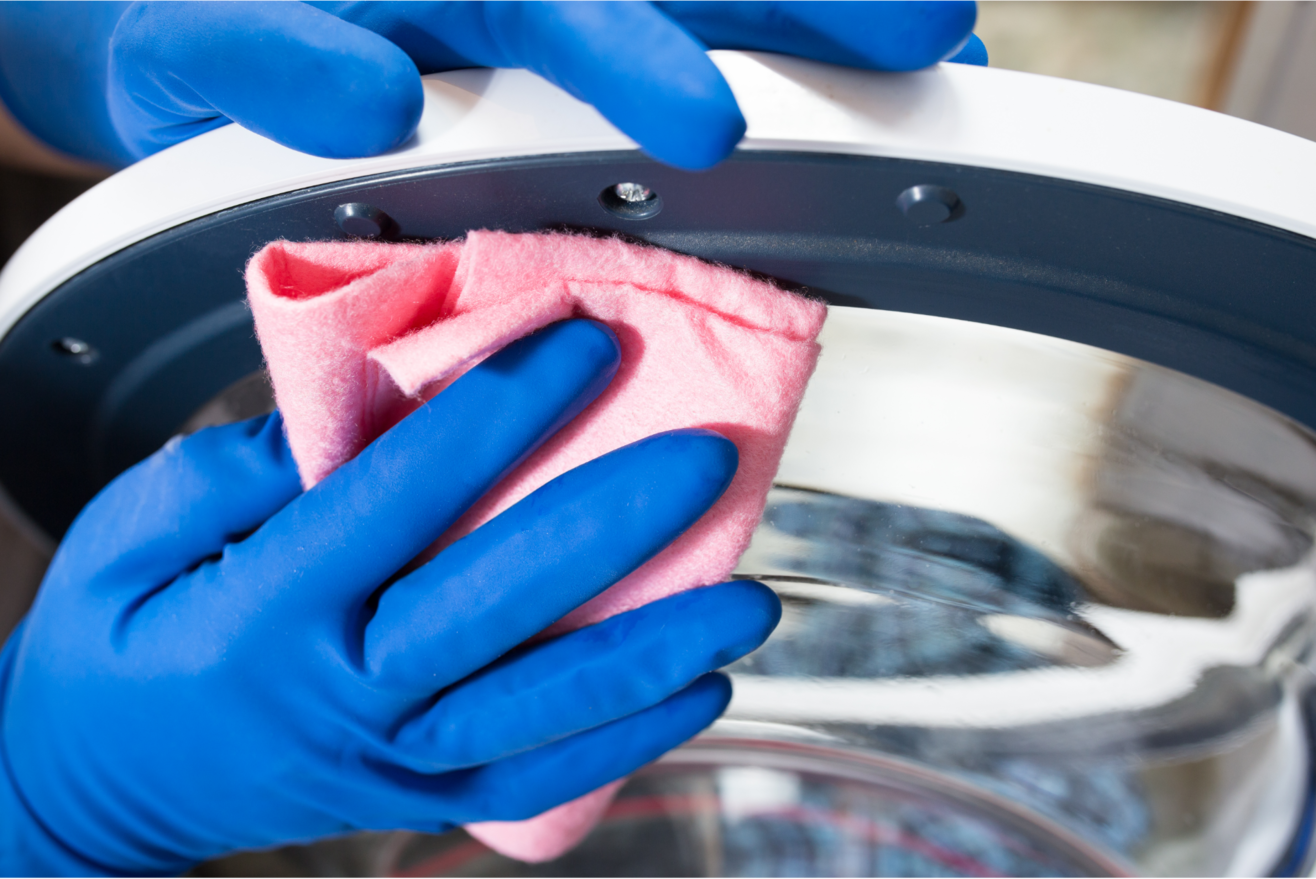
How to Clean a Washing Machine: Step-by-Step Procedure
To guide you through the process effectively and safely, we recommend reading the following guide thoroughly. This comprehensive resource provides step-by-step instructions, valuable tips, and important safety precautions to follow.
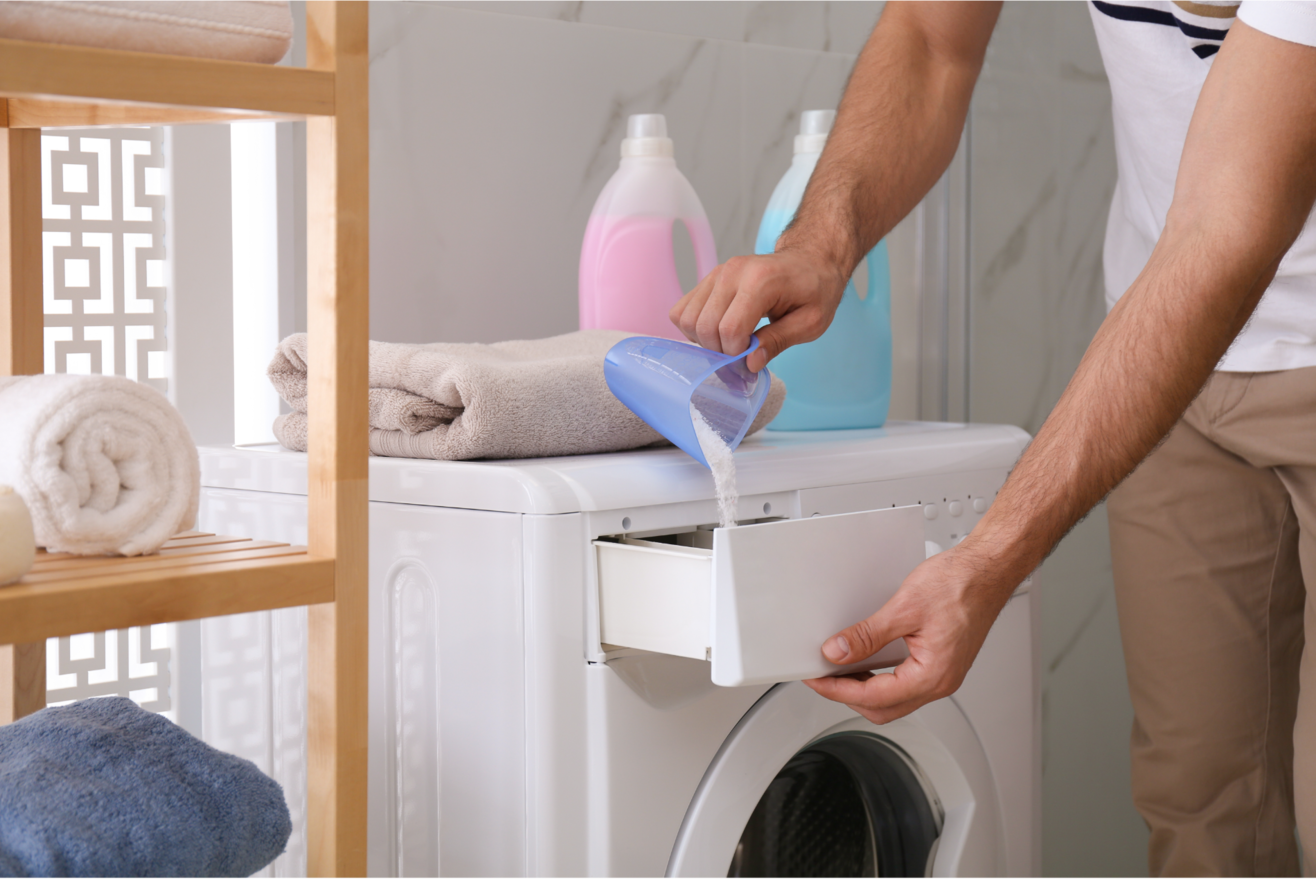
By following this guide, you’ll not only extend the lifespan of your washing machine but also enhance its performance, allowing you to enjoy cleaner and fresher laundry. So, take a moment to familiarize yourself with the instructions provided and embark on the journey to a cleaner, more efficient washing machine
Step 1- Gether Materials:
- 1. Distilled white vinegar
- 2. Baking soda
- 3. A microfiber cloth or sponge
- 4. An old toothbrush
- 5. A bucket
- 6. Hot water
- 7. Mild dish soap (optional)
- 8. Rubber gloves (optional)
Step 2: Take Safety Measures
Cleaning your washing machine is essential for maintaining its performance and ensuring your laundry comes out fresh and clean. However, before you begin the cleaning process, it’s crucial to prioritize safety. Here’s a detailed explanation of this step:
1. Unplug the Washing Machine:
If your washing machine is plugged into an electrical outlet, disconnect the power cord from the socket. This action prevents any accidental starts or electric shocks while you’re cleaning the machine.
2. For Hardwired Machines:
Some washing machines are hardwired directly into your home’s electrical system. If this is the case for your machine, you won’t be able to unplug it conventionally. Instead, you’ll need to locate the circuit breaker that supplies power to the washing machine.
- Locate the Circuit Breaker Panel: The circuit breaker panel is usually located in your home, often in the basement, garage, or utility room. It may also be in a closet or hallway.
- Identify the Correct Circuit: Look for the circuit breaker corresponding to your washing machine. Circuit breakers are typically labeled, so find the one labeled for the laundry room or washing machine. Alternatively, if the breakers are not labeled, you might need to test them one by one to identify the right one.
- Turn Off the Circuit Breaker: Once you’ve identified the correct breaker, flip it to the OFF position. This action cuts off the power supply to the washing machine, ensuring your safety during the cleaning process.
By taking these precautions and ensuring your washing machine is completely disconnected from the power source, you minimize the risk of electrical accidents. Safety should always be the first priority when performing any maintenance or cleaning tasks involving electrical appliances.
Step 3: Clean the Exterior
Certainly! Cleaning the exterior of your washing machine is an essential step in maintaining its appearance and functionality.
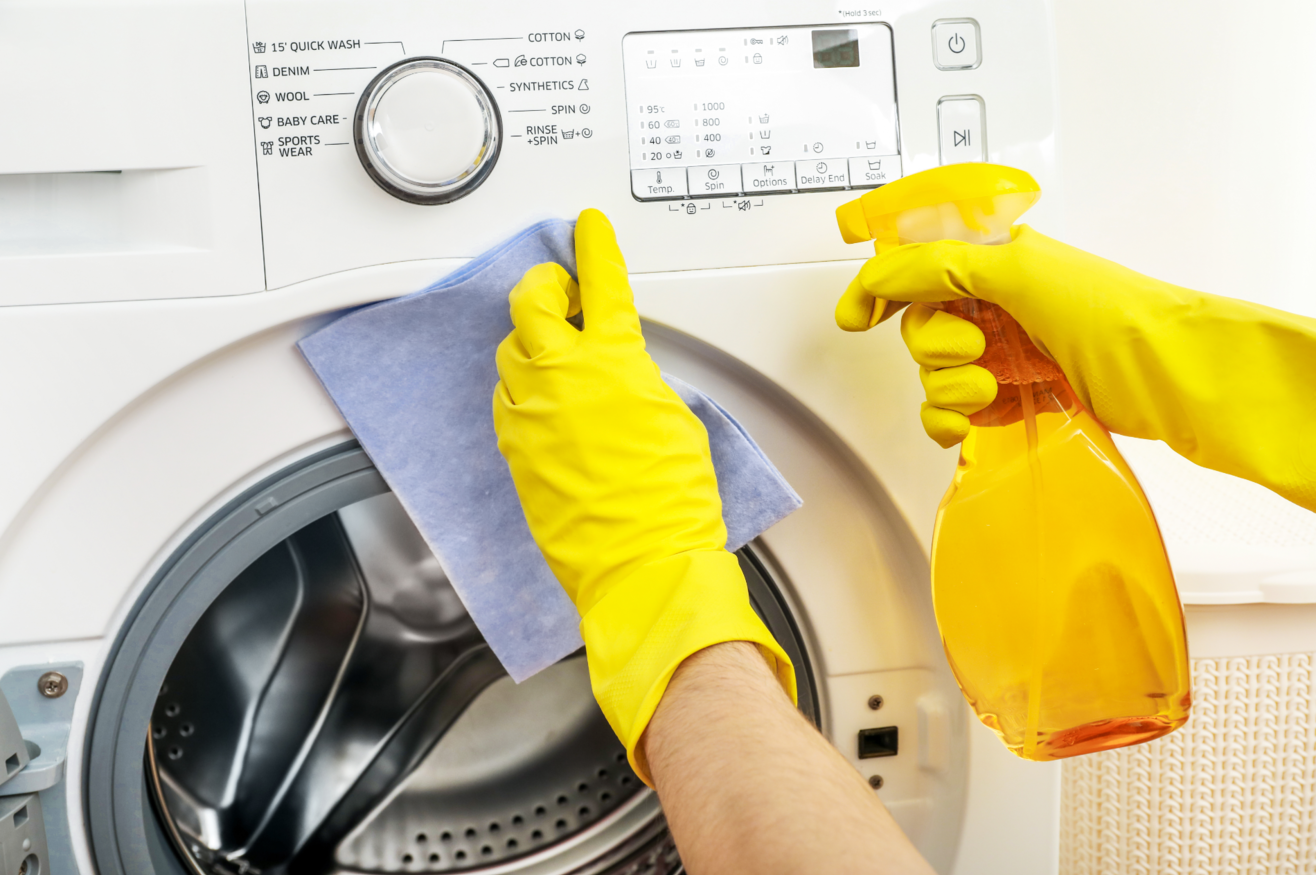
Here’s how you can clean the exterior of your washing machine in detail:
• Prepare the Cleaning Solution
Mix a small amount of mild dish soap or laundry detergent with warm water in a bowl. You don’t need a lot; a few drops of soap in a bowl of water will suffice.
• Dampen the Cloth
Dip a clean, soft microfiber cloth into the soapy water mixture. Wring out excess water so the cloth is damp but not soaking wet. Too much water can damage the machine.
• Wipe Down the Exterior
Start wiping down the exterior of the washing machine. Begin with the top and sides, then move on to the front and back. Pay close attention to areas that are frequently touched, such as the control panel, knobs, and buttons. These areas tend to accumulate dirt and grime.
• Clean the Control Panel, Knobs, and Buttons
Use the damp cloth to gently clean the control panel, knobs, and buttons. Be cautious not to let water seep into any openings, as this can damage the internal components of the machine. If needed, you can use a cotton swab or a soft-bristled toothbrush dipped in the soapy water to clean hard-to-reach areas around the buttons.
• Rinse Off the Soap Residue
Take another clean, damp microfiber cloth and wipe off the soap residue from the washing machine. Make sure to remove all traces of soap to prevent it from drying and leaving streaks on the surface.
• Dry Thoroughly
Use a dry microfiber cloth to thoroughly dry the entire exterior of the washing machine. Pay attention to corners, crevices, and seams where water might accumulate. Leaving the machine damp can lead to mold or mildew growth.
• Inspect for Remaining Dirt or Stains
After the washing machine is dry, inspect the exterior to ensure that there are no remaining dirt, stains, or soap residue. If you find any stubborn stains, you can try using a specialized cleaner or a mild abrasive cleaner suitable for your washing machine’s surface.
• Polish (if necessary)
If your washing machine has a stainless steel or glossy surface, you can use a clean, dry microfiber cloth to polish it and restore its shine.
Regularly cleaning the exterior of your washing machine in this manner will not only keep it looking clean and well-maintained but also prevent dirt and grime from affecting its performance over time.
Step 4: Clean the Detergent Dispenser
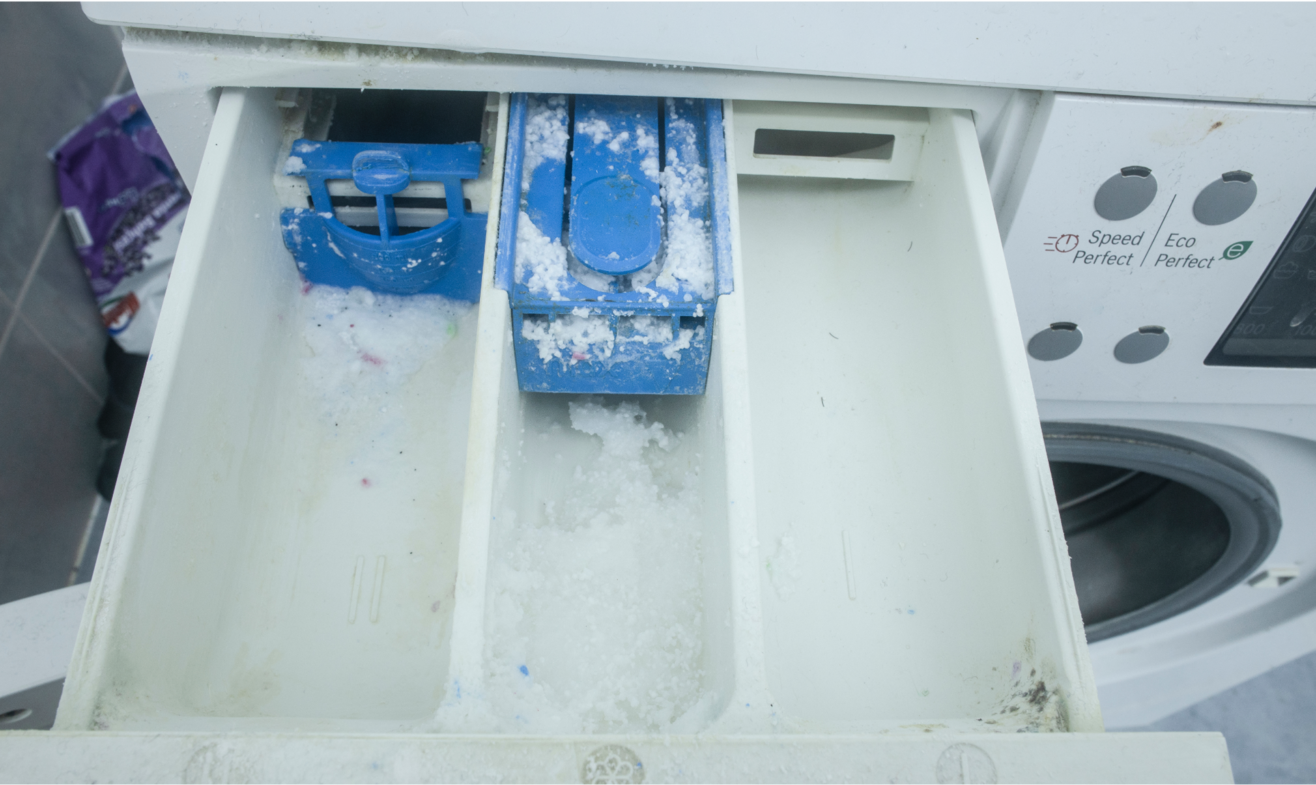
To clean the detergent dispenser of a washing machine, follow these steps carefully:
• Remove the Dispenser
First, remove the detergent dispenser from the washing machine. Most dispensers are designed to be easily taken out. Refer to your washing machine’s user manual if you are unsure how to do this.
• Soak in Warm, Soapy Water
Fill a basin or sink with warm water and add a mild detergent or dish soap. Submerge the detergent dispenser in this soapy water solution. Ensure that the dispenser is fully immersed so that the warm, soapy water can penetrate all parts of the dispenser.
• Scrub Away Residue
Use a toothbrush to scrub the interior and exterior of the detergent dispenser. Pay special attention to corners, crevices, and any areas with stubborn residue. The bristles of the toothbrush can help dislodge the dried detergent and grime. Be gentle but firm to ensure effective cleaning.
• Rinse Thoroughly
After scrubbing, rinse the detergent dispenser thoroughly under running water to remove all soap residue and loosened grime. Make sure to flush out all the detergent compartments and drainage holes.
• Allow to Dry Completely
Place the dispenser on a clean, dry cloth or towel and let it air dry completely. Ensure there is no residual moisture left in any of the compartments. Leaving it to air dry thoroughly is crucial to prevent the growth of mold and mildew.
• Reattach to the Washing Machine
Once the detergent dispenser is completely dry, reattach it to the washing machine according to the manufacturer’s instructions. Make sure it fits securely and snaps into place.
By following these steps, you ensure that the detergent dispenser of your washing machine is thoroughly cleaned, free from residue, mold, and mildew, which can help maintain the cleanliness and efficiency of your machine.
Step 5: Clean the Drum
Certainly! Cleaning the drum of your washing machine is an essential step to ensure it functions effectively and your laundry comes out fresh and clean.

Here’s how to clean the drum in detail:
• Prepare the Drum
Make sure your washing machine is completely empty. Remove any clothes, lint, or debris from the drum. If there are visible stains or grime inside the drum, you can wipe them off using a damp cloth before proceeding.
• White Vinegar Cycle
Fill the detergent compartment with white vinegar. If your washing machine doesn’t have a designated compartment, pour two cups of white vinegar directly into the drum. Vinegar is a natural disinfectant and helps in breaking down mineral deposits and soap scum inside the drum.
• Baking Soda Cycle
After the white vinegar cycle, sprinkle one cup of baking soda directly into the drum. Baking soda is an excellent cleaning agent that helps to neutralize odors and further break down any remaining residue in the drum.
• Run the Machine
Close the washing machine door and select a hot water cycle. Hot water is more effective in dissolving detergent residues and killing germs. Start the cycle without adding any laundry. This allows the white vinegar and baking soda to circulate through the internal components of the washing machine. Let the cycle run completely. This may take anywhere from 30 minutes to an hour, depending on your washing machine model.
• Wipe Down the Drum and Seals (Optional)
After the cycle is complete, open the washing machine door and carefully inspect the drum and rubber seals. Use a clean, damp cloth to wipe down the drum interior, removing any remaining vinegar or baking soda residue. Pay special attention to rubber seals, as mold and mildew can accumulate here. Wipe them thoroughly to prevent future odors and mold growth.
• Air Out the Washing Machine
After cleaning, leave the washing machine door ajar for a few hours or until it is completely dry. This helps to prevent moisture buildup, which can lead to unpleasant odors.
By following these steps, you ensure that your washing machine drum is thoroughly cleaned, eliminating odors and residues. Regular maintenance like this can prolong the life of your washing machine and keep your laundry smelling fresh.
Step 6: Clean the Rubber Seal and Gasket
Cleaning the rubber seal and gasket of your washing machine is crucial to prevent mold and mildew buildup.

Here’s a step-by-step explanation of how to clean it:
• Prepare the Cleaning Solution
Mix equal parts water and white vinegar in a bowl or a spray bottle. Vinegar acts as a natural disinfectant and helps to dissolve mold and mildew.
• Dampen a Cloth or Sponge
Dip a clean cloth or sponge into the vinegar and water solution. Make sure it’s damp, not soaking wet. You don’t want excess water running into the washing machine.
• Wipe the Rubber Seal
Gently wipe down the entire rubber seal or gasket with the damp cloth or sponge. Pay extra attention to areas with visible mold or mildew spots. Also, clean the folds and crevices thoroughly, as these are the places where moisture tends to accumulate.
• Scrub Stubborn Mold with a Toothbrush
If you notice stubborn mold that doesn’t come off with a cloth or sponge, use an old toothbrush. Dip the toothbrush into the vinegar and water solution and scrub the affected areas gently. The bristles of the toothbrush can reach into small crevices where mold might be hiding.
• Rinse with Clean Water
After you’ve wiped and scrubbed the rubber seal, dampen another cloth or sponge with clean water and wipe down the seal again. This step is important to remove any residual vinegar and loosened mold particles.
• Dry Thoroughly
Use a dry cloth to wipe the rubber seal completely dry. Leaving it damp could encourage mold growth again. You can also leave the washing machine door open for a while to let any remaining moisture evaporate.
• Regular Maintenance
To prevent mold and mildew from coming back, make it a habit to wipe down the rubber seal and gasket after every wash. Leaving the washing machine door slightly ajar when not in use can also help in keeping the interior dry and preventing mold growth.
By following these steps, you can effectively clean the rubber seal and gasket of your washing machine, ensuring a mold-free and hygienic environment for your laundry.
Step 7: Rinse and Wipe Dry
After completing the vinegar and baking soda cycles, it’s essential to thoroughly rinse and wipe dry the interior of the washing machine. Start by using a clean, damp cloth to wipe down the drum and all interior surfaces. Make sure to reach into all the corners and crevices to remove any remaining residue or grime. This step is crucial to ensure that there are no leftover cleaning agents or dirt particles inside the machine, which could affect the cleanliness of your future laundry loads. After wiping down all the surfaces, leave the washing machine door and detergent dispenser open for a few hours. Allowing the interior to air dry completely is important, as it helps prevent the growth of mold and mildew in the damp environment of the washing machine. By following this step, you ensure that your washing machine is not only clean but also ready for efficient and odor-free laundry cycles.
Step 8: Clean the Filter (if applicable)
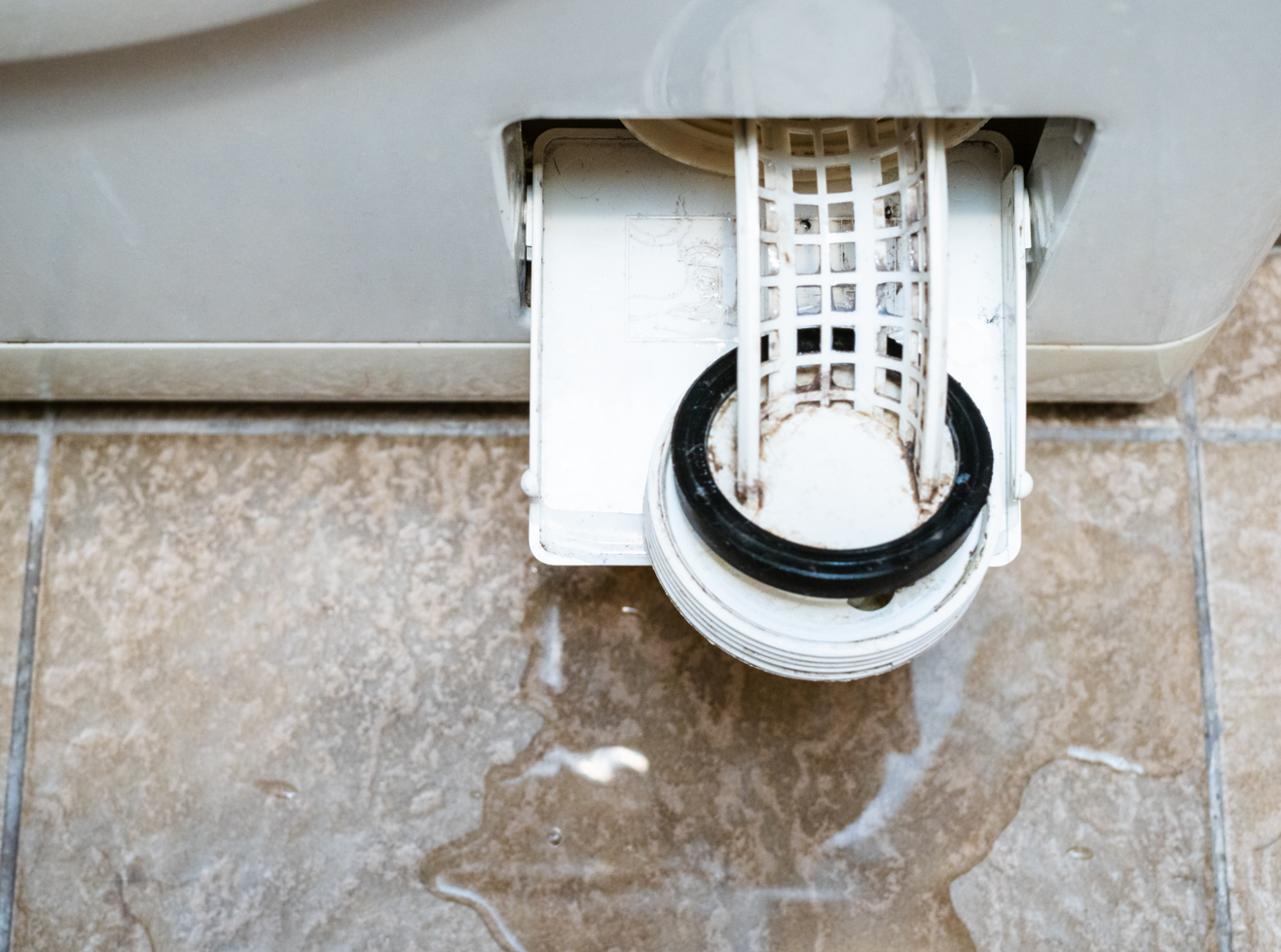
Cleaning the filter is a crucial step in maintaining a washing machine’s efficiency and prolonging its lifespan. First, locate the filter, which is typically found near the bottom front or back of the machine.
Check the user manual if you’re unsure about its placement. Once located, carefully open the filter compartment. Keep a towel or a shallow basin underneath, as some water might spill out. Slowly unscrew the filter cap, allowing any residual water to drain out. Remove any lint, debris, or foreign objects trapped inside the filter.
It’s essential to do this diligently, as accumulated debris can hinder the machine’s drainage and lead to unpleasant odors. After cleaning, securely screw the filter cap back into place. Ensure it’s tightly sealed to prevent leaks. Regularly cleaning the filter, especially if you frequently wash large or heavily soiled loads, helps maintain optimal washing machine performance, ensuring your clothes come out clean and fresh after every wash.
Keep It Fresh
Keeping your washing machine fresh is crucial to ensure your laundry comes out clean and smelling great. After every wash, leave the machine door slightly ajar. This simple act allows air to circulate inside the drum, preventing the growth of mold and mildew, which can cause unpleasant odors.
Additionally, placing a small container of baking soda inside the machine when it’s not in use can be highly effective. Baking soda is a natural deodorizer and helps absorb any lingering smells. This proactive approach not only maintains a pleasant fragrance inside the machine but also ensures that your clothes come out smelling fresh every time.
By incorporating these habits into your laundry routine, you can enjoy clean, odor-free clothes without worrying about any unwanted scents lingering in your washing machine.
Maintenance Tips for Washing Machine
To keep your washing machine clean and odor-free between deep cleanings, follow these tips:
- Leave the door ajar: After each wash, leave the door slightly open to allow the interior to dry and prevent mold growth.
- Use HE detergent: High-efficiency (HE) detergents produce fewer suds, which can reduce the likelihood of soap scum buildup.
- Clean your washing machine once a month: To maintain peak performance, aim to clean your washing machine at least once a month.
How to Clean a Washing Machine: Read Some FAQs
A1: Cleaning your washing machine is essential to prevent mold, mildew, and unpleasant odors from developing. It also helps maintain the machine's performance and prolong its lifespan.
A2: It's recommended to clean your washing machine at least once a month, or more frequently if you notice odors or visible residue.
A3: You'll typically need white vinegar, baking soda, a microfiber cloth, an old toothbrush, and hot water.
A4: Yes, you can use bleach, but white vinegar and baking soda are gentler and environmentally friendly alternatives.
A5: Remove the drawer, soak it in warm, soapy water, and scrub it with a brush. Rinse and dry it thoroughly before reinserting it into the machine.
A6: To clean the drum, run an empty hot water cycle with two cups of white vinegar or one cup of baking soda. This helps to remove residue and kill bacteria.
A7: Yes, clean the rubber door seal by wiping it with a mixture of water and white vinegar or a bleach solution. Make sure to reach into the folds where mold and grime tend to accumulate.
A8: Leave the door or lid open between washes to allow air to circulate, and remove wet laundry promptly to prevent moisture buildup.
A9: Yes, there are specific washing machine cleaning products you can purchase. Follow the manufacturer's instructions on these products for best results.
A10: Yes, it's important to clean the lint filter regularly. A clogged filter can reduce the machine's efficiency and potentially cause overheating.
A11: You can clean the exterior with a damp cloth and a mixture of water and mild detergent. Avoid using abrasive cleaners or chemicals that can damage the finish.
A12: Citric acid can be used to clean a washing machine, especially for descaling. Follow the manufacturer's recommendations for using citric acid.
A13: If odors persist, you may need to repeat the cleaning process or check for hidden sources of mold and mildew in hard-to-reach areas.
A14: While you can use a few drops of essential oil on a cloth or dryer ball to add fragrance to your laundry, avoid adding oils directly to the washing machine as they can lead to clogs and build-up.
Conclusion
In conclusion, maintaining a clean washing machine is essential not just for the freshness of your laundry but also for the longevity of your appliance. Regular cleaning, as outlined in the steps above, is a straightforward yet vital process to ensure your washing machine functions efficiently and delivers spotless clothes every time. By adhering to these simple guidelines, you’re not only enhancing the cleanliness of your garments but also preserving the investment you made in your washing machine. So, take a moment to gather your cleaning supplies, roll up your sleeves, and dedicate some time to giving your faithful washing machine the care it deserves. Your efforts will be rewarded with a fresh-smelling, well-functioning appliance that consistently delivers clean and crisp laundry.
